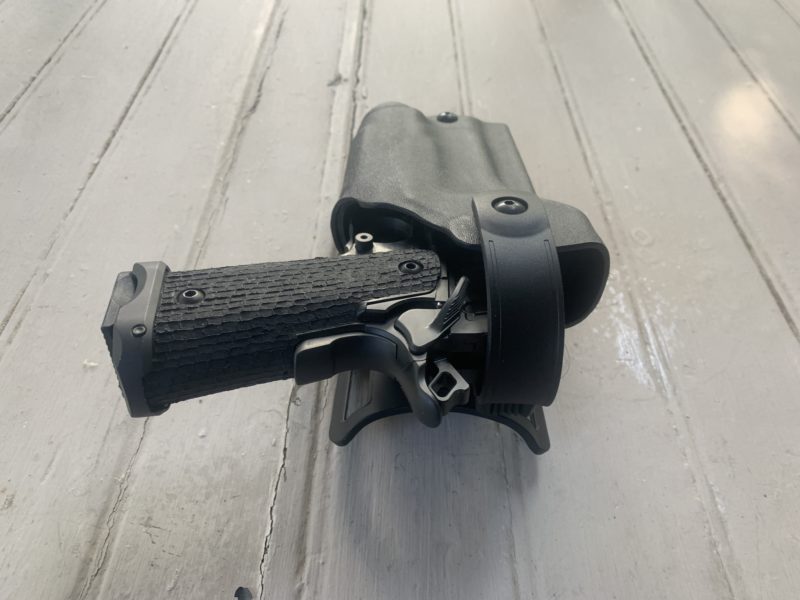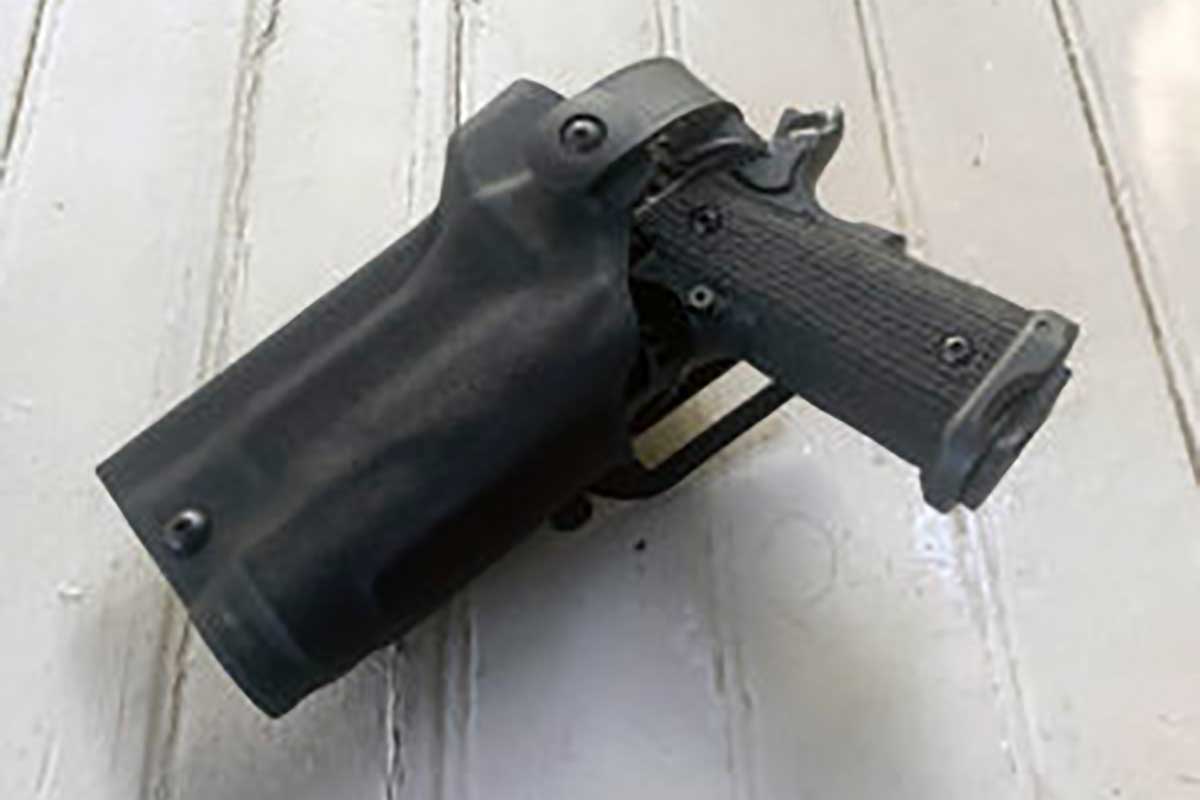
AC-052422-DutyGear_1200
US Duty Gear's US-80 duty holster with a rotating bale for a Stacatto pistol with an optic and a Surefire X300U pistol light.
The collective “we” are at a great place in time – regarding the quality and quantity of defensive gear (for our firearms and the rest of our defensive tools). You can’t scroll the internet or magazine pages without coming across a link or an ad for a holster company. At least some of those companies have made duty holsters for peace officers, service members, and those who regularly go into harm’s way.
Thinking back, I recall several companies turning out duty holsters when I was hired as a deputy sheriff. The ones I remember were Safariland, Bianchi, Ted Blocker, and Gordon Davis. Of this group, only Bianchi seems to have dropped out of the duty holster market based on a website review. Over the years, I have bought and worn holsters from all four companies.
In the business world, which I admit to knowing very little about, there are reasons companies move, shift production from here to there, and maybe even move again. All of that can adversely impact a company’s ability to produce and supply a product to the end-user. If users cannot find what they need or it takes a very long time for the product to reach the end-user, they start looking elsewhere.
Elsewhere? Where would that be?
One of those is a relatively new company in Ontario, California. But wait – some of you will say – didn’t one of the big holster and gear manufacturers already move away from there? Yes, one company did. Out of that move emerged U.S. Duty Gear, headed by Luis Flores, who had previously been Safariland’s production manager. In a future article, I’ll talk about the beginning and evolution of U.S. Duty Gear.
I was first introduced to U.S. Duty Gear holsters last fall at the yearly Gunsite Alumni Shoot (the G.A.S. match). One of the shooters is a tenured member of a full-time and very active law enforcement Special Weapons Team on the west coast. He had previously been a student of mine. John was competing out of his duty gear rather than a competition rig. At some point, I noticed his holster was familiar in appearance, looking like it was designed from the ground up to take a pistol-mounted optic with a weapon-mounted light. At some point, we talked about the holster, and John filled me in on U.S. Duty Gear and their efforts. He added that his agency, about 9000 deputy sheriffs, was approving the holsters for duty use.
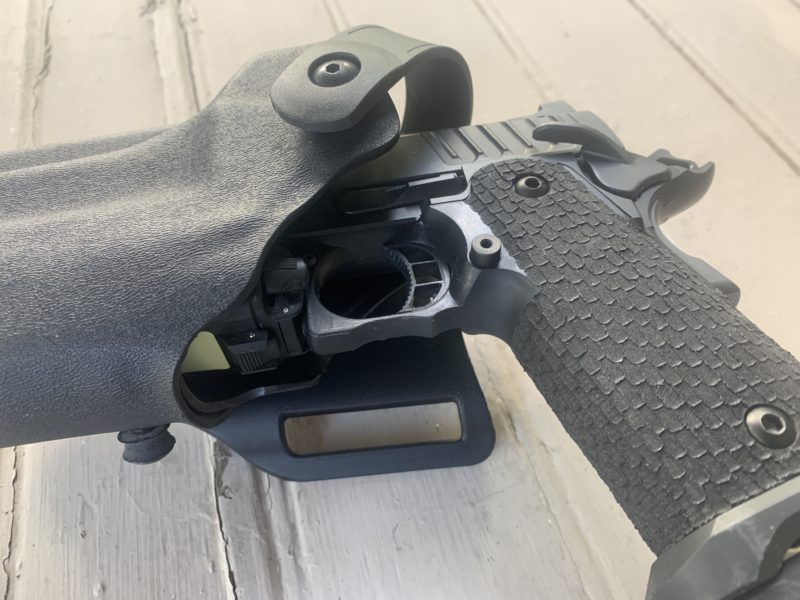
The holster is wide enough for this pistol light, even with the Phlster ARC switch – but not wide enough that other people’s fingers can get in.
Since that conversation, the Los Angeles Police Department and Los Angeles County Sheriff’s Department have approved the U.S. Duty Gear holsters for use.
Within a couple of months, I ordered their US-80 holster – a mid-ride design that would accept both a pistol-mounted optic and a weapon-mounted light with a forward rotating bale for retention.
Regarding choices, they have twenty-two different firearm make and model options. And there are fourteen other optic options as well. And the holsters can be made for numerous weapon-mounted lights. At least five different finishes are available, from a high-gloss patent leather look to a flat dark earth. One option I appreciate is the ability to have the holster molded for Surefire’s D.G. switch.
The holster body is constructed of a thicker polymer sheet than the community has used to. The belt attachment is deeper than the preceding design. I was told this change accommodated the prevalence of external vest carriers for the handgun to clear it on the draw.
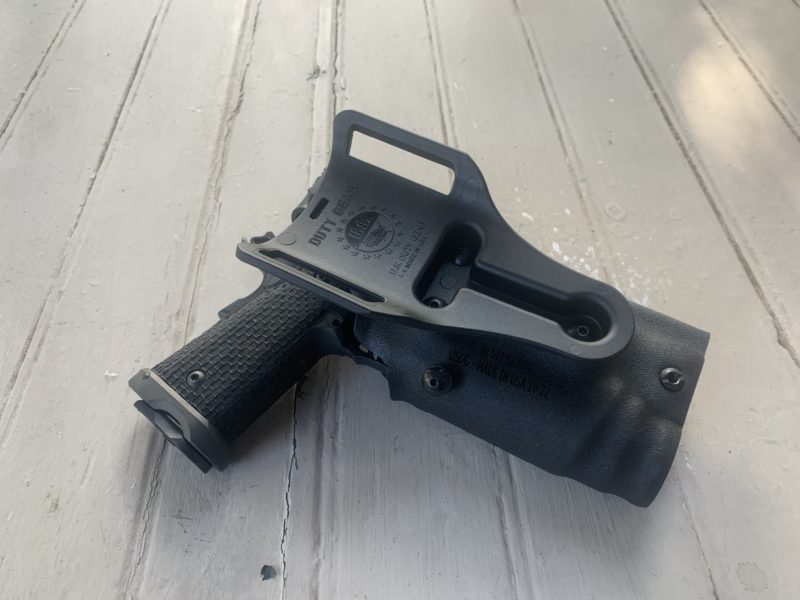
They designed their belt loop with a greater depth to aid in drawing the pistol if one is using an external vest carrier.
The interior is partially lined with suede patches. Treating them with a bit of silicon spray is not a bad thing.
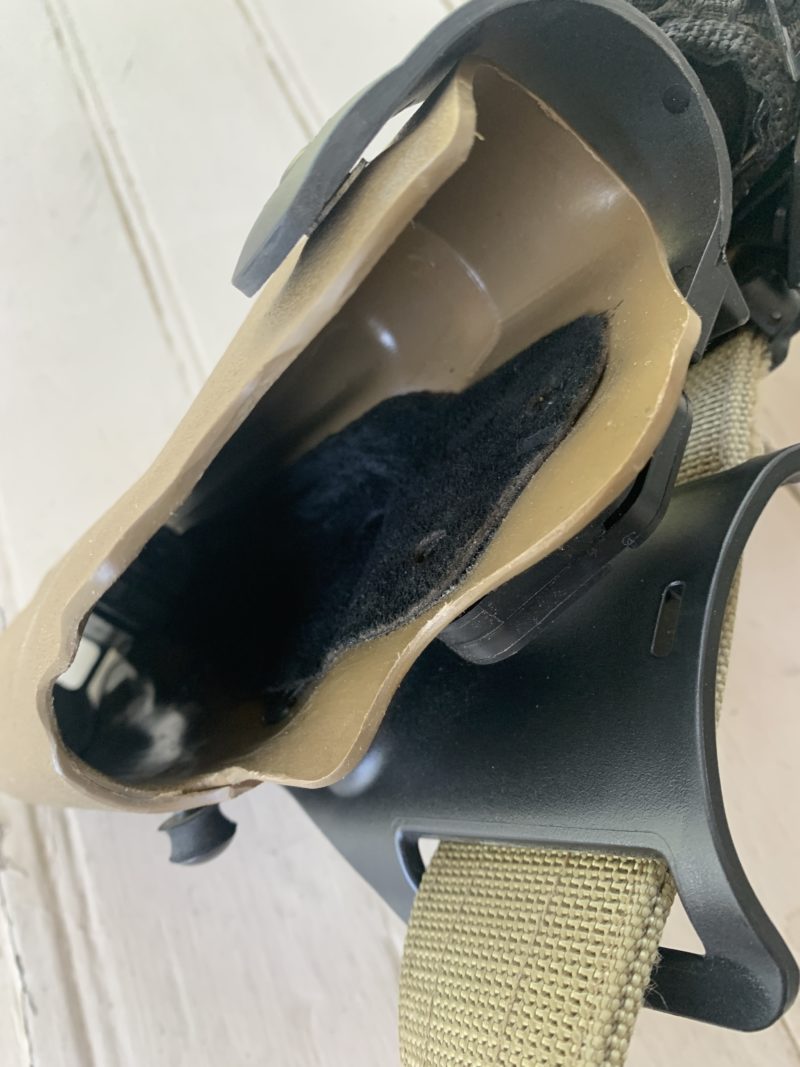
The holsters have suede patches lining the inside of the holster. A bit of silicon spray is a good thing here.
When I retired, the first book I read was John Bianchi’s book on holster design and manufacture – Blue Steel and Gunleather. Like Safariland, his company was a part of the southern California gun culture in the 70s and 80s. That culture included gunsmiths – like Armand Swenson, trainers – like Michael Harries, and more. In Bianchi’s book, he talked about standard duty holsters of the era having a muzzle forward design, which I had always been fascinated by. By the time I came on the job, more manufacturers were producing designs with the muzzle angled to the rear, known as the F.B.I. cant. The U.S. Duty Gear holster comes with a neutral cant, meaning the muzzle is pointed straight down.
Like the D.G. switch option, this is another example of them listening to the end-users rather than blindly doing what was done before.
I have had several range sessions with my US-80 holster on my teaching and training rig, including teaching a low light instructor class.
The U.S. Duty Gear US-80 holster is a solid design, well-constructed for a uniformed duty rig. The belt shank is sturdy, and its attachment to the holster body has not given me any problems.
Before I go further, another company out there has a thumb driven, rearward rotating lever that retains the holstered pistol or releases it. U.S.D.G. took a different approach to develop a similar mechanism. During my April 2022 visit to the factory, I saw and handled their retention and release system. Look for another article on this product and the company soon.
So far, U.S. Duty Gear is a relatively small company with a competent staff headed by very experienced people with a career in making police gear. They’re producing a well-thought-out product and maintaining high standards. I have no problems recommending their holsters for duty use.

